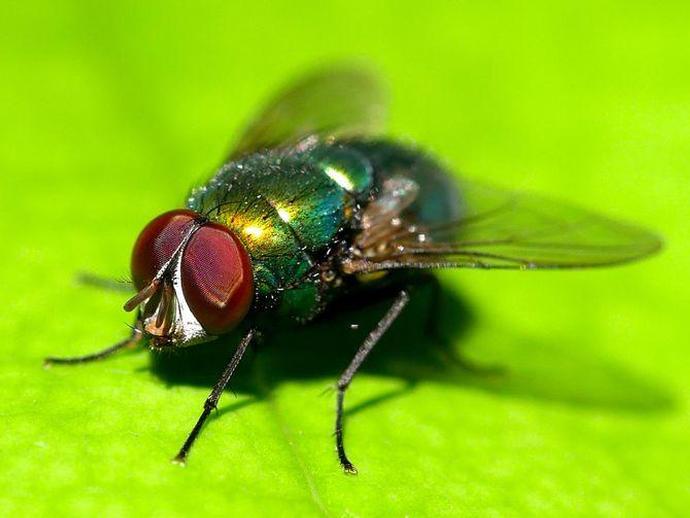June 8, 2021
It's time for another #BenInNature update presented by our friends at Carter Bank & Trust!
Yesterday, we looked at a sub-par photo of an unusual critter; today, let's look at a great photo of something much more common!
This is a green bottle fly belonging to the genus Lucilia. According to VMNH Executive Director and fly expert Dr. Joe Keiper, it's sometimes necessary to count the individual bristles on wing veins to narrow it down to the exact species, so we'll just leave it at genus for now!
Green bottle flies are slightly larger than house flies, and they can be found in tropical and temperate environments around the world. Every other fact I'm about to share about these flies ranges from "kind of gross" to "I shouldn't have read this over lunch," so please plan accordingly!
These are members of the family Calliphoridae, also known as the "blowflies." Like most blowflies, females lay egg masses on carrion and the larvae (i.e., maggots) consume dead flesh. Sometimes, however, the flies aren't too picky when it comes to whether or not the flesh is dead. In parts of northern Europe, these flies are often called "sheep blowflies" because they lay eggs in sheep's wool. The larvae hatch and crawl down to the sheep's skin and begin feeding, causing lesions and other issues. This is known as "myiasis," and I strongly recommend that you never, ever type that word into a Google image search.
Believe it or not, the larvae of green bottle flies are quite useful in some specific medical applications! If someone has a necrotic wound and surgery or antibiotics are impractical for whatever reason, sterile green bottle maggots are occasionally used by doctors to clean the wound! That may sound bizarre, but the maggots are very good at removing dead tissue while leaving healthy tissue behind, and their secretions have been shown to promote tissue regeneration!
Not only that, but green bottle flies are also helpful for forensic entomologists. When a dead body is found, forensic entomologists can use these flies and their larvae (amongst other species) to determine an approximate time of death!
Green bottle flies may not be quite as cute and inoffensive as a ladybug or a bumblebee, but they're definitely fascinating!
ABOUT #BenInNature
Social distancing can be difficult, but it presents a great opportunity to become reacquainted with nature. In this series of posts, Administrator of Science Ben Williams ventures outdoors to record a snapshot of the unique sights that can be found in the natural world. New updates are posted Monday - Friday, with previous posts highlighted on the weekends. This series of posts is made possible thanks to the support of VMNH Corporate Partner Carter Bank & Trust (www.cbtcares.com).
NATURE PHOTO IDENTIFICATIONS
If you discover something in nature that you would like help identifying, be sure to message us right here on Facebook with a picture (please include location and date of picture) and we'll have our experts help you identify it!

 Hours & Admissions
Hours & Admissions Directions
Directions

